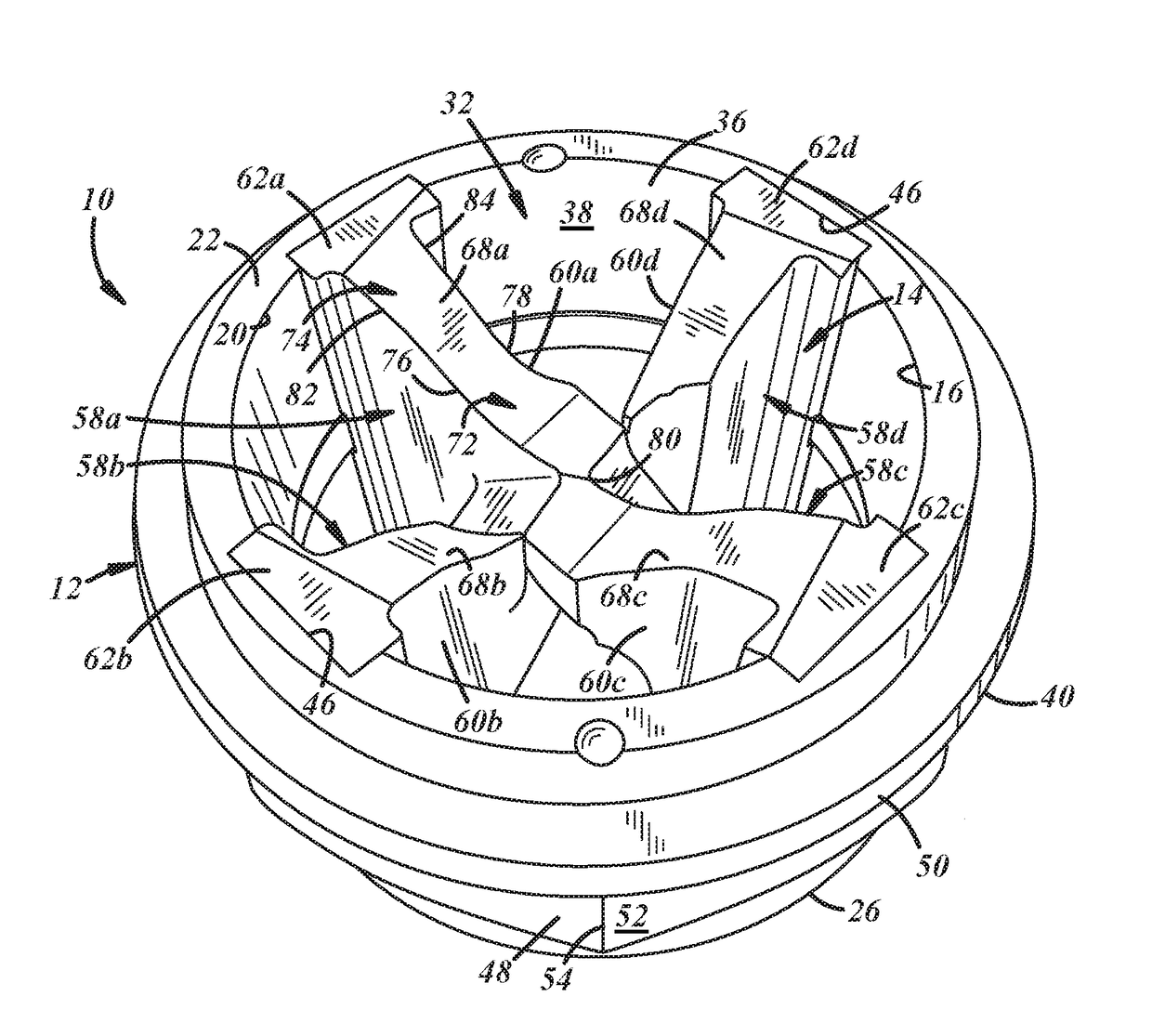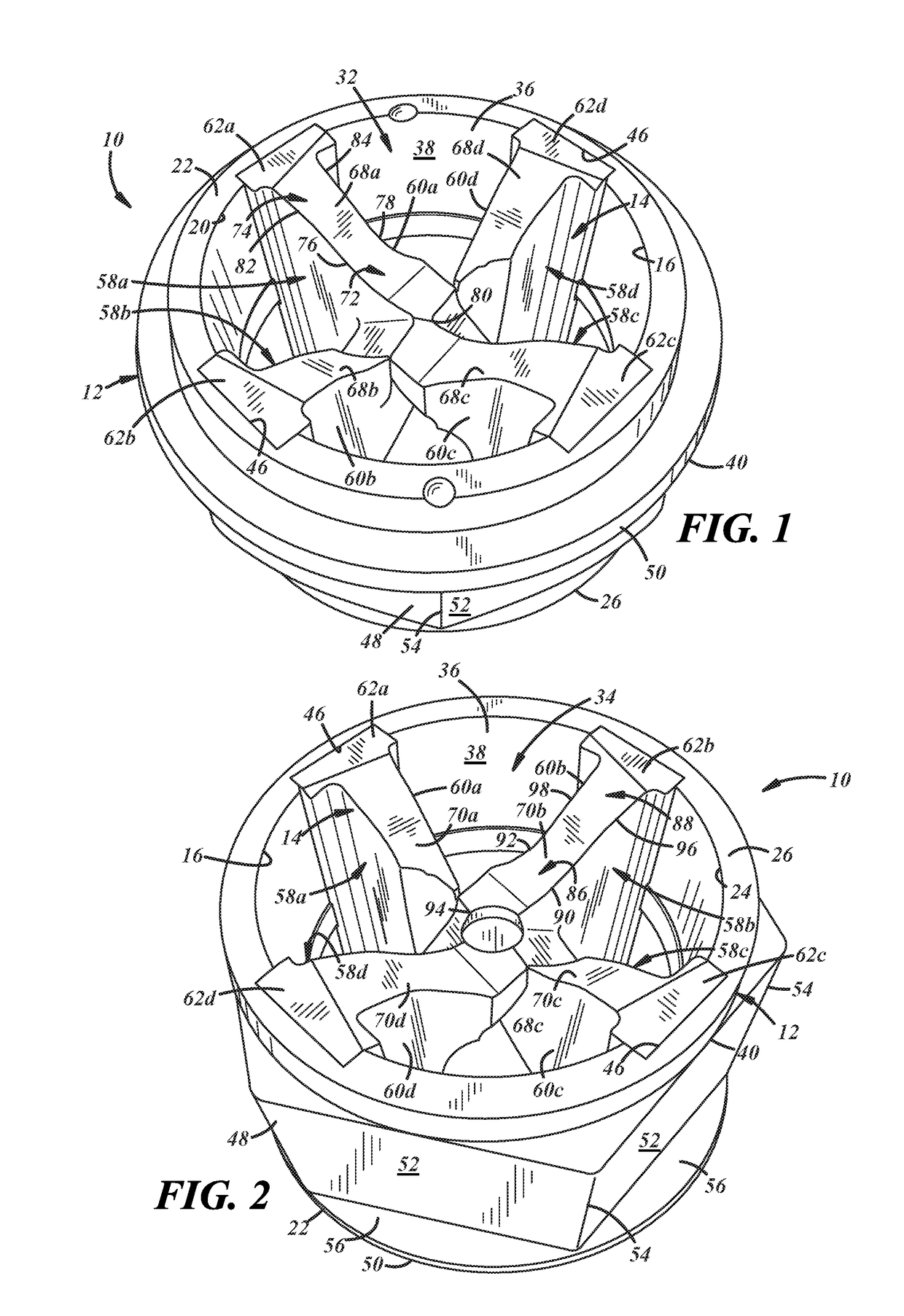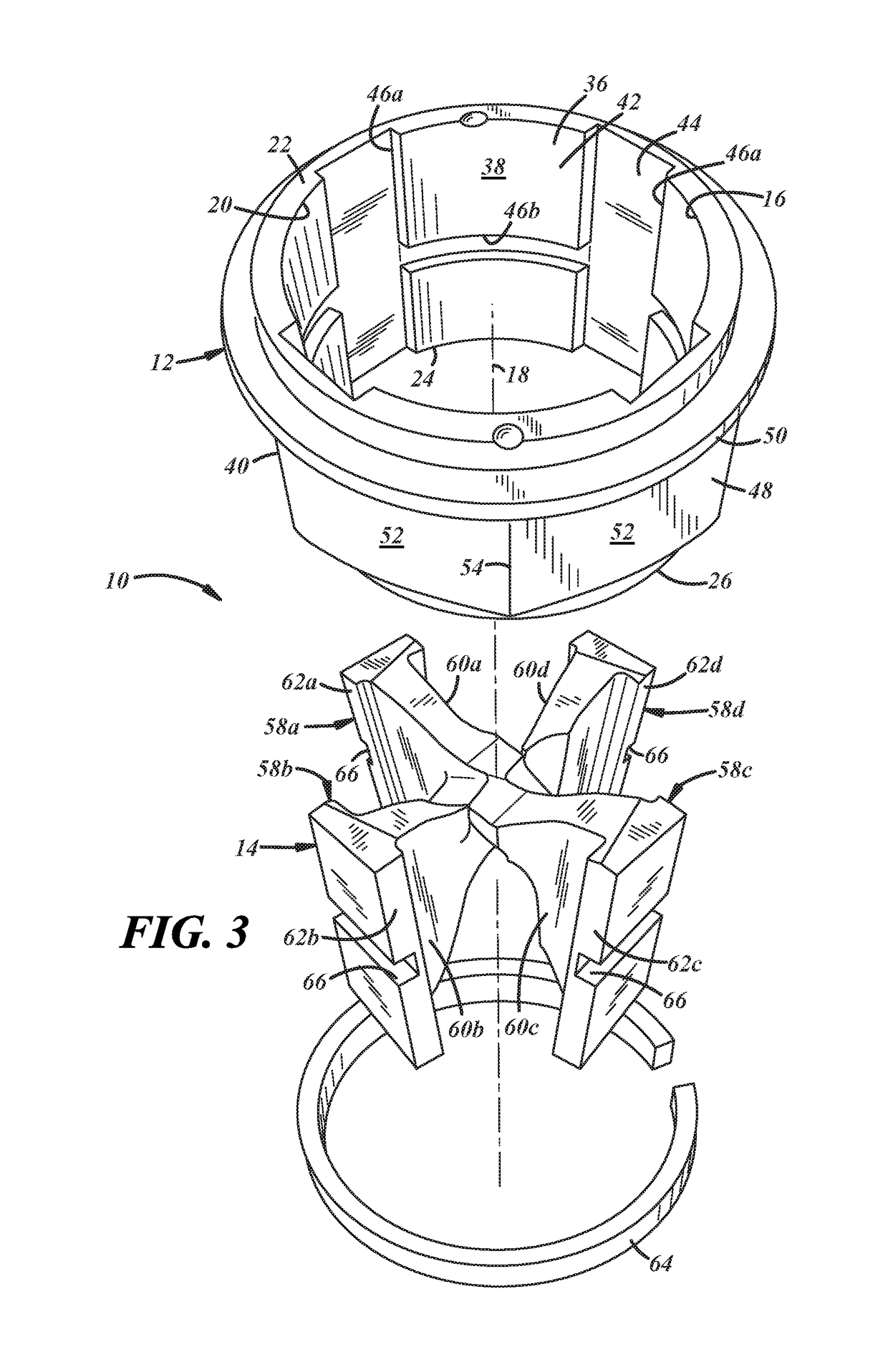Welding electrode cutting tool and method of using the same
a cutting tool and welding electrode technology, applied in the direction of electrode maintenance, manufacturing tools, electrode features, etc., can solve the problems of plastic deformation, welding aluminum workpieces to steel workpieces, and the welding of welding electrodes is fraught with challenges
- Summary
- Abstract
- Description
- Claims
- Application Information
AI Technical Summary
Benefits of technology
Problems solved by technology
Method used
Image
Examples
Embodiment Construction
[0046]A cutting tool is disclosed that can simultaneously cut and restore asymmetric weld face geometries of two welding electrodes that are subject to different degradation mechanisms. The cutting tool may be used as part of a method for resistance spot welding a workpiece stack-up that includes adjacent and overlapping steel and aluminum workpieces. In particular, a first welding electrode with a first weld face and a second welding electrode with a second weld face may be employed to pass an electrical current through the workpiece stack-up at a weld site. The geometry of the first weld face and the geometry of the second weld face are asymmetric because of the need to compensate for the different physical properties of the steel and aluminum workpieces. Over time, the first and second weld faces become degraded to such an extent that spot welding operations are adversely affected. To address this issue, the cutting tool can be used to periodically redress both the first and seco...
PUM
| Property | Measurement | Unit |
|---|---|---|
| diameter | aaaaa | aaaaa |
| diameter | aaaaa | aaaaa |
| diameter | aaaaa | aaaaa |
Abstract
Description
Claims
Application Information
 Login to View More
Login to View More - R&D
- Intellectual Property
- Life Sciences
- Materials
- Tech Scout
- Unparalleled Data Quality
- Higher Quality Content
- 60% Fewer Hallucinations
Browse by: Latest US Patents, China's latest patents, Technical Efficacy Thesaurus, Application Domain, Technology Topic, Popular Technical Reports.
© 2025 PatSnap. All rights reserved.Legal|Privacy policy|Modern Slavery Act Transparency Statement|Sitemap|About US| Contact US: help@patsnap.com



